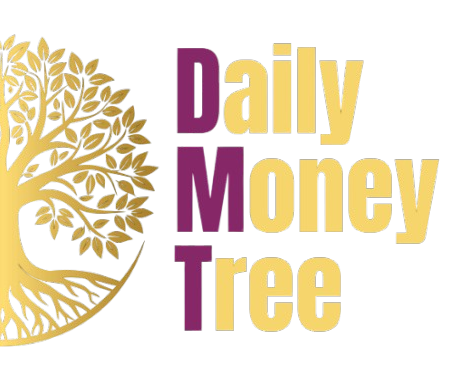What is cryptocurrency and how do you trade with it? Those are the 2 most frequently asked questions I get whenever I talk to people about Bitcoin, Litecoin, or any other cryptocurrency. I will try to explain in a clear and articulate way the answers to these, and other questions you might have when it comes to how to trade with cryptocurrency.
What is Cryptocurrency?
Cryptocurrencies are decentralized virtual currencies.
That means that they are not under the control of financial institutions or governments. You can invest or trade in cryptocurrencies like any other currency.
There are several cryptocurrencies and each has its own characteristics. Those with significant market capitalization are Bitcoin, Bitcoin Cash, Ether, Litecoin, and Stellar.
Cryptocurrencies are known to be an alternative to traditional currencies, even though they were actually created with the intent of functioning as a payment method. In fact, they are accepted by several shops.
Cryptocurrencies have much more similarities to commodities, such as gold than forex.
- The trend of cryptocurrencies is not tied to the performance of the economy of a particular country
- Interest rates and monetary policies do not have an impact on the value of cryptocurrencies
- Investors prefer to own cryptocurrencies waiting for them to increase in value, and then convert them to traditional currencies
What is trading with cryptocurrencies?
So, how do you trade with cryptocurrency?
Trading with cryptocurrencies consists in operating on the price movements of cryptocurrencies with a trading account with CFDs, or by buying and selling the underlying currencies on an exchange.
Trading on cryptocurrencies with CFDs
CFDs are derivative financial instruments, which allow you to invest in the price trend of cryptocurrencies without having to own the real value of the underlying.
You can decide to open a long position (buy) if you think the value of the cryptocurrency will increase, or open a short position (‘sell’) if you think the value will go down.
CFDs are leveraged products, so you only need to deposit a small amount of money, the margin, to get maximum exposure in the underlying market.
Based on the total size of the open position, your profits or losses could be amplified due to the leverage effect.
Buying and selling cryptocurrencies via exchanges
When you buy cryptocurrencies through an exchange, you are actually buying the asset.
You will have to open an exchange account, cover the total value of the asset to open a position and deposit the cryptocurrency tokens in a digital wallet, where you can keep them until you decide to sell them.
Exchange accounts have a steep learning curve, which allows you both to understand the criticalities of the technologies involved and to analyze the data in the best possible way. Exchange accounts have a maximum deposit limit and can have high maintenance costs.

How do cryptocurrencies work?
The cryptocurrency markets are decentralized, which means that currencies are not issued and are not protected by a central body such as a government or central bank. Cryptocurrencies, on the other hand, are managed by a network of private computers and servers.
However, cryptocurrencies can be bought or sold in an exchange account and held in ‘wallets’.
Compared to traditional coins, cryptocurrencies have a virtual value for those who own them and are registered in the blockchain, the technology that supports cryptocurrencies.
If a user wants to transfer cryptocurrencies to another user, they can make a transaction on the recipient user’s wallet. The transaction ends after verification and registration in the blockchain, through a process known as ‘mining’. In this way, cryptocurrency tokens are also created.

What is the blockchain?
The blockchain is a shared digital ledger of data. For cryptocurrencies, the blockchain chronologically records each unit of cryptocurrency, which tracks the various transfers from one user to another. The blockchain records transactions within ‘blocks of data and each new recorded block is inserted at the beginning of the data chain.
Blockchain technology has data protection systems that traditional computer files do not have.
Consent of the network
A blockchain file is registered on several computers across a network (as opposed to a single location) and is readable by those who are part of the network.
This feature makes the collected data transparent and very difficult to alter, free of weak points, and therefore protected from attacks by cyber pirates, or from any human and software errors.
Encryption
The blocks are linked together by an encrypted system, the result of complex mathematical calculations and advanced computer science. Any attempt to alter the data blocks the encrypted links between the blocks and they can easily be identified as fraudulent by servers on the network.
What does it mean to ‘mine’ cryptocurrencies?
The cryptocurrency ‘mining’ process consists of checking the most recent transactions and then adding new blocks to the blockchain.
Verification of transactions
The ‘miner’ computers select a series of transactions awaiting review, to verify the actual availability of funds to complete a transaction.
This process involves checking the transaction data and comparing it with those present in the history of previous transactions, saved in the blockchain. A second verification is to confirm that the sender of the transaction transferred funds using a private key.
Creating a new data block
The mining computers record the validated transactions within a new data block and generate the encrypted connection with the previous block, solving a complex algorithm.
When the computer manages to generate the connection, it saves the block from scratch in the most updated version of the blockchain file and shares it within the network to carry out the update.
What moves the cryptocurrency market?
The cryptocurrency markets move, as in the case of other financial markets, based on supply and demand. However, being decentralized, they tend to be free from many of the factors that normally influence the bullish and bearish trends of traditional currencies.
Despite the general skepticism surrounding cryptocurrencies, the following factors are the ones that have the greatest impact on their prices:
- Issue: the number and total value of the issue, cancellation or loss of cryptocurrencies
- Market capitalization: the value of all currencies in circulation and users’ perception of future market developments
- Press release: Opinion on a cryptocurrency and how much media coverage it receives
- Integration: the measurement of the cryptocurrency’s ability to integrate into a pre-existing payment system, such as e-commerce
- Key Events: Fundamental events such as regulatory updates, security breaches, and economic slowdowns

How cryptocurrency trading works
You can trade cryptocurrencies through a CFD account, derivative products that allow you to operate on the appreciation or depreciation of the chosen cryptocurrency. Prices are quoted in traditional currencies like the US dollar and you don’t actually own the cryptocurrency itself.
Contracts for difference (or ‘CFDs’) are leveraged products: this means that you can open a position by depositing only a small fraction of the total value of the trading operation.
Please note: trading with leveraged products can amplify both your profits and your losses should the market move in the opposite direction to your chosen position.
What is the spread in trading with cryptocurrencies?
The spread is the difference between the buy price and the selling price of a cryptocurrency. As in many other financial markets, when you open a position on a cryptocurrency market, you have the option of choosing two prices.
If you want to open a long position, you will have to choose the buy price, the value of which is slightly higher than the real market price. If you want to open a short position, you will have to choose the selling price, the value of which is slightly lower than the market price.
What is a ‘lot’ in cryptocurrency trading?
Cryptocurrencies are often traded in contract lots or cryptocurrency tokens, which are used to determine the size of each trade.
The lots of cryptocurrencies are usually very small due to the high volatility of the markets: many represent only basic units of the cryptocurrency. However, there are also some cryptocurrencies that are traded in larger batches.
How does leverage work in cryptocurrency trading?
Leverage serves to increase exposure to cryptocurrency markets, without having to pay the total value of the trading position in advance.
With leverage you will only have to deposit a small amount, the margin, to open a position and gain exposure on the market. When you close an open position with leverage, your profit or loss is based on the total size of the trading position.
Leverage can amplify both profits and losses, with the risk of incurring losses that exceed the margin initially invested on a single trade. To trade with leverage, it is therefore important to learn how to use how to manage risk.
How does margin work in cryptocurrency trading?
Margin is a key component of leveraged trading. It is the term used to describe the initial deposit to open and hold a position.
When trading cryptocurrencies on margin, remember that the margin requirement may vary based on your broker and the size of the trade.
Margin is usually represented as a percentage value of the total position. A trading operation on bitcoin (BTC), for example, could require a 50% margin of the total value of the position, which you will have to pay if you want to open a position. So if the total value is $ 5000, you only need to deposit $ 2500.
What is a pip value in trading with cryptocurrencies?
Pips are units used to measure the price movement of a cryptocurrency and refer, in the specific case, to a digital price movement on a specific basis. In general, the most important cryptocurrencies are traded in US dollars, so if the price moves from $ 190 to $ 191, this means that the cryptocurrency has only moved one pip.
Obviously, this rule does not apply to all cryptocurrencies, as the pips of some cryptocurrencies can be calculated in cents or even fractions of a cent of a traditional coin.
It is important to know the operational details of the chosen trading platform, to ensure that you understand on what basis the price movements are calculated, before opening a position.
Final Thoughts on How Do You Trade With Cryptocurrency
If you have been reading my blog then you know that this is not my usual writing style.
I like to put more soul, more spice in my writing.
But, hey. We’re talking about finance, exchange, currency, leverage here!
This is as far as it gets from my usual blogging, freelance lifestyle, or email marketing articles.
My sole intention is to answer the questions many of you have been asking in a direct and matter-of-fact way, without trying to be too poetic about it.
I hope that you liked this informative article and that it will be useful in your future cryptocurrency trading career.
If you really want to go into detail and learn every secret on there is to know about Bitcoin, Litecoin, and how do you trade with cryptocurrency, I strongly suggest you take a look at “Crypto with James” below:

To your success!
S







